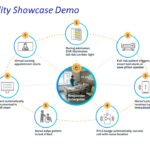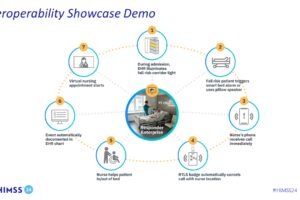Talking with a CIO this week, he described how telehealth is now just part of the infrastructure for how they see patients. Certainly telehealth balooned during COVID and has come back to more reasonable levels now, but in many cases telehealth appointments have still settled at 100 times what they were before COVID. Patients and clinicians are now more comfortable with telehealth as an option that provides great convenience for the patients.
One of the most common telehealth platforms being used right now is Microsoft Teams. My guess is that it was widely adopted because it was included in the Microsoft package that many health systems were already buying. It made sense to use something they had already bought and had installed at their organization.
As healthcare organizations grew their use of telehealth, one of the challenges they faced was how to include healthcare interpreters into the process. Not only is doing so what’s right for the patients, but it’s also legally required in many situations. I don’t need to dive into the studies here about how care is improved when a medical interpreter is used so the clinician understands the patient and the patient understands the clinician.
The good news is that today there are some great solutions for this problem. For example, for those using Microsoft Teams for telehealth, it was just announced that Boostlingo On-Demand is now available within the Microsoft Teams app. Interpreters can be connected on-demand via video or audio within seconds or you can pre-schedule interpreters for virtual appointments. This type of deep integration is key to making sure clinicians can easily access healthcare interpreters that improve the experience for patients while still providing a seamless experience for the clinician.
“There are over 25 million LEP individuals in the US and 11 million more who are Deaf or Hard of hearing,” according to Merrie Wallace, MN BSN, Chief Revenue Officer at Boostlingo. “Since Telehealth has become increasingly popular, healthcare providers must find a remote interpretation solution that seamlessly integrates into existing telehealth workflows. By integrating Boostlingo On-Demand into Microsoft Teams, we ensure telehealth providers are in the best position to succeed in every interaction.”
While most healthcare organizations have medical interpreters on staff for their common languages, Boostlingo’s solution is able to connect patients and their care providers to interpreters for over 300 spoken languages and ASL. That’s another illustration of the power of remote interpretation services being integrated into Microsoft Teams. Plus, for those not on Teams, Boostlingo is also integrated with Zoom and Webex.
Most healthcare organizations I speak with are finding the need for interpreters in healthcare is continuing to grow. Making sure you have that service available to your patients is essential to meet legal requirements for accessibility and is a great service to your patients. However, you do not want finding an interpreter to be a burden for your staff, so it needs to be seamlessly integrated into their workflow. Plus, as healthcare organizations take on more value based contracts, being able to effectively communicate with your patients in their preferred language is going to become even more important.














Add Comment